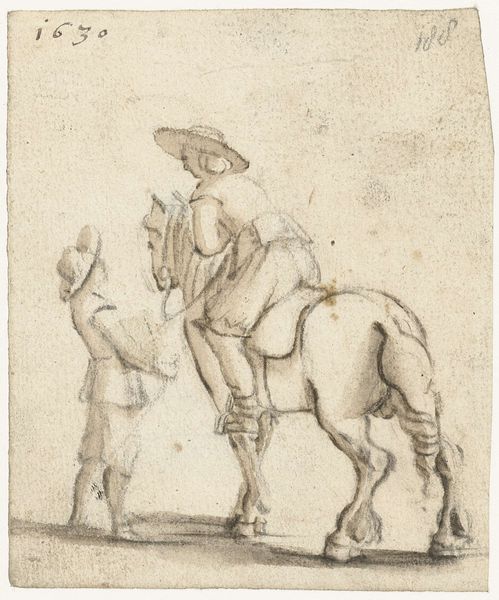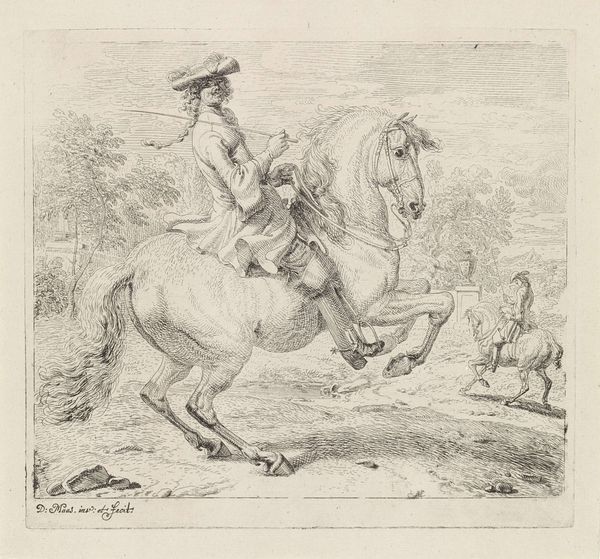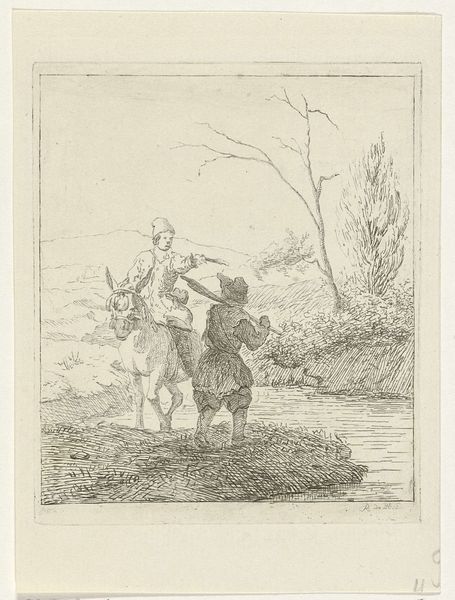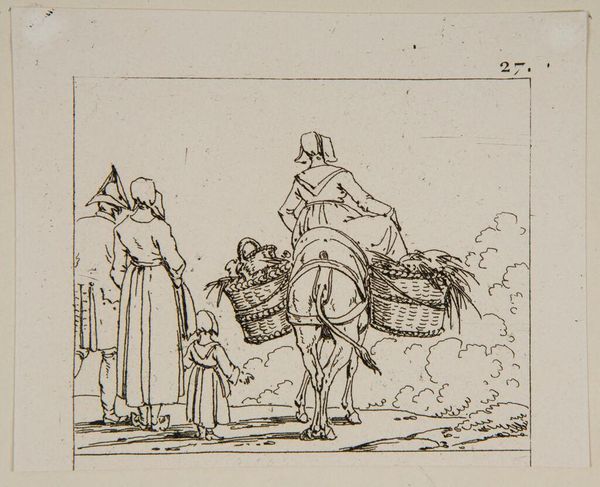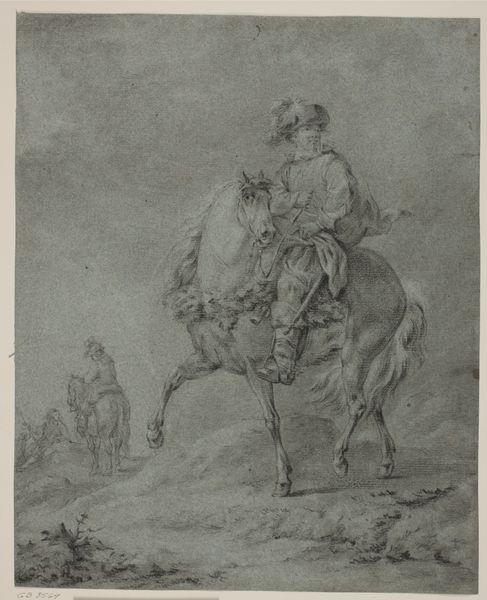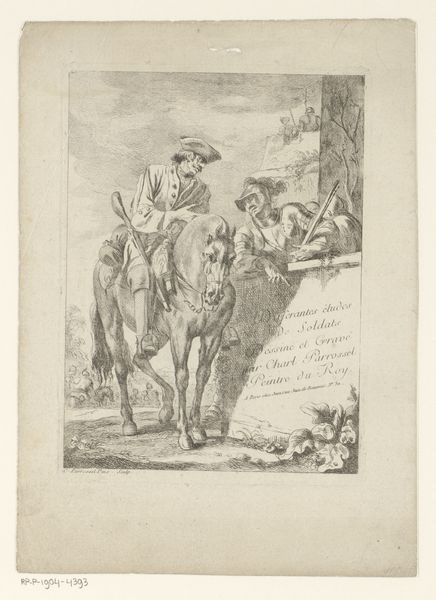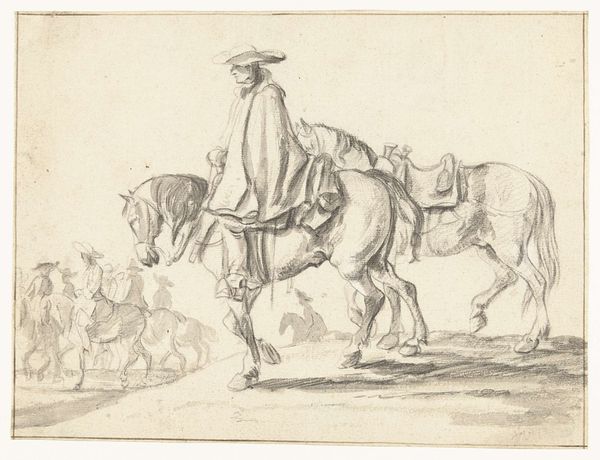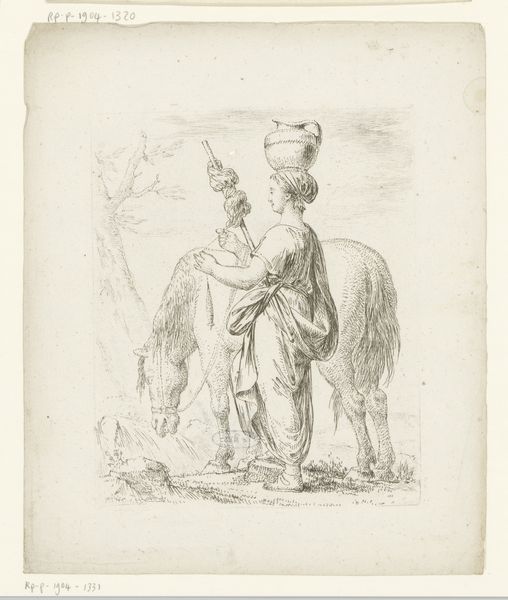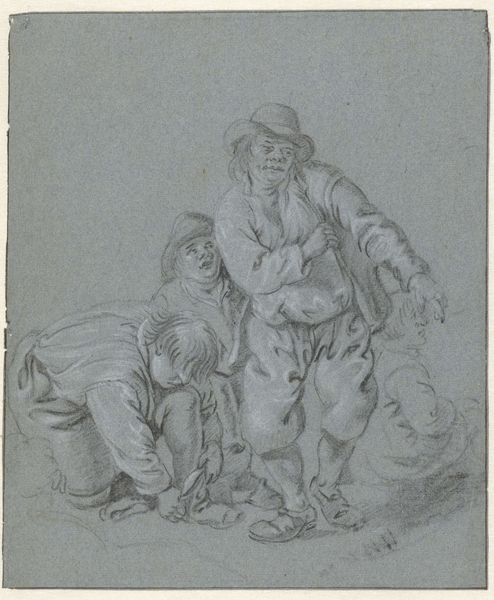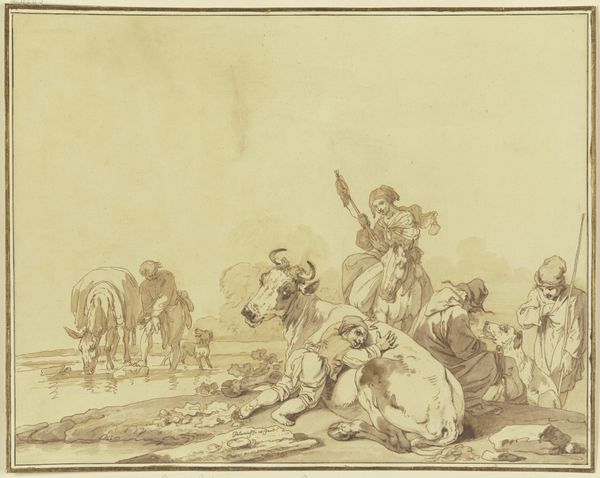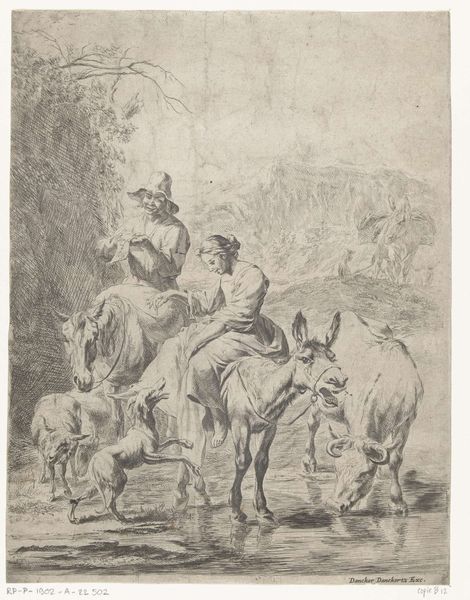
drawing, pencil
#
portrait
#
drawing
#
imaginative character sketch
#
toned paper
#
light pencil work
#
quirky sketch
#
dutch-golden-age
#
pencil sketch
#
landscape
#
figuration
#
personal sketchbook
#
pencil
#
sketchbook drawing
#
pencil work
#
watercolour illustration
#
genre-painting
#
sketchbook art
Dimensions: height 156 mm, width 138 mm
Copyright: Rijks Museum: Open Domain
Curator: This drawing, titled "Willem van de Velde en zijn zoons Willem en Adriaen," believed to have been created sometime between 1646 and 1672, comes to us from Adriaen van de Velde and resides at the Rijksmuseum. A pencil on toned paper, it has a somewhat unassuming quality, wouldn’t you agree? Editor: Indeed. There's a definite modesty in its light pencil work. It has the spontaneous, unfiltered character of something jotted down in a personal sketchbook, but I see more of a quirky quality. Curator: Quirky, how so? The composition strikes me first, these figures placed rather freely. We see three men and a horse, one on horseback, another leaning in as though in conversation, and a third seated to the side. It is a simple genre scene, though the application of such fine pencil lends an air of considered execution. Editor: Perhaps it’s the tonal uniformity that lends it that feeling; the figures seem slightly disconnected within the composition, but look at the socio-economic hierarchy suggested here. A figure on horseback versus a figure on the ground creates a palpable difference in class and power within the artwork, as well as narrative depth within its form. Curator: An intriguing reading, as usual. I appreciate the sensitivity of the shading, a deft rendering that captures texture and form using the subtle capabilities of this medium. There's a landscape aesthetic at play here that offers visual relief, even in this informal mode. The figures certainly occupy and even define a space of modest yet careful rendering, and it comes to life as a lively setting. Editor: From a more historical view, considering the family connection makes the work so much more intriguing. The sons in their father's orbit and one sketching. A record not only of family bonds, but of artistic legacy at play during the Dutch Golden Age. In a sense, you witness a moment of knowledge transmission as they explore artistry during an innovative period. Curator: You've encouraged a newer reading of this pencil work for me today. I must confess that thinking about the interplay between artists gives it a more endearing resonance. Editor: And your precise formal reading encourages one to linger longer on an apparently unpretentious composition. This quiet sketchbook page hides richer textures of interpretation and historical engagement.
Comments
No comments
Be the first to comment and join the conversation on the ultimate creative platform.
